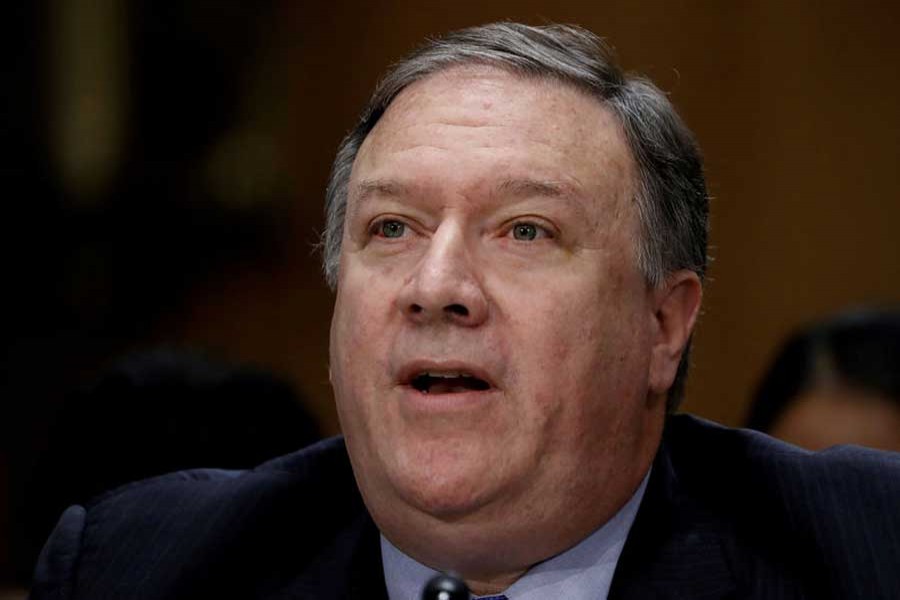When the US Secretary of State flies into Southeast Asia this week with a new investment pitch for the region, the response could be: thanks a million, but please stop threatening a trade war with China that will make us lose billions of dollars.
Analysts say the $113 million of technology, energy and infrastructure initiatives trumpeted by Mike Pompeo earlier this week - the first concrete details of US President Donald Trump’s vague ‘Indo-Pacific’ policy - may be hard to sell to countries that form an integral part of Chinese exporters’ supply chains.
It may even further inflame tensions with Beijing, which has been spreading money and influence across the region via its Belt and Road Initiative development scheme.
“The Southeast Asian capitals are more worried about any blowback effects for them of U.S.-China trade tension than they are about how much they can benefit from this $113 million initiative,” said Malcolm Cook, senior fellow at the Institute of Southeast Asian Studies in Singapore.
“Pompeo has a hard selling job. There is still no real positive trade story for Asia coming out of the United States.”
Hot on the heels of Washington’s new economic plan for emerging Asia came reports the United States could more than double planned tariffs on $200 billion of imported Chinese goods from dog food to building materials. China called it “blackmail” and vowed retaliation.
After a brief meeting with new Malaysian Prime Minister Mahathir Mohamad in Kuala Lumpur, Pompeo will fly to Singapore - a global trading hub that could be one of the hardest-hit in the region by a trade war - for a sit-down with the 10-member Association of Southeast Asian Nations (ASEAN) on Friday.
Singapore’s biggest bank, DBS, estimates that a full-scale trade war - defined as 15-25 per cent tariffs on all products traded between the US and China - could more than halve Singapore’s growth rate next year from a forecast 2.7 per cent to 1.2 per cent. Malaysia’s growth rate in 2019 could fall from an estimated 5 per cent to 3.7 per cent.
“We are all acutely aware of the storm clouds of trade war,” Singapore’s Foreign Minister Vivian Balakrishnan said at the opening of an ASEAN foreign ministers meeting on Thursday that precedes meetings with the United States and other nations.
Singapore’s Prime Minister Lee Hsien Loong said earlier this year that a trade war would have a “big, negative impact” on the country.
Ratings agency Moody’s said this week that an escalation of trade tensions in 2018 had become its “baseline expectation”, and that Asia was “especially vulnerable” given the integration of regional supply chains.
Sanctions on North Korea
As well as trade, Friday’s meeting will also cover security issues such as South China Sea disputes and North Korea’s nuclear disarmament. The United States will press Southeast Asian leaders to maintain sanctions on Pyongyang following reports of renewed activity at the North Korean factory that produced the country’s first intercontinental ballistic missiles capable of reaching the United States.
Pompeo will also travel to Indonesia during his trip - Southeast Asia’s biggest economy which under Trump faces losing some of the trade preferences given by Washington for poor and developing countries.
Few officials around the region offered comment on the Indo-Pacific strategy when contacted by Reuters for this story. One said that the ASEAN meeting in Singapore would be an opportunity “to have clarity and a more unified position” on the vision.
One reason for caution is that the region has been wrong-footed by US advances before.
Former U.S. President Barack Obama’s “pivot” to Asia went on the backburner after Trump won the 2016 election promising to put “America First”. One of his early acts in office was to pull out of the Trans-Pacific Partnership (TPP) trade agreement, which involved four Southeast Asian states.
The result was that across Asia, more and more countries were pulled into China’s orbit: softening their stance on territorial disputes in the South China Sea and borrowing billions of dollars from Beijing to develop infrastructure.
The Philippines is one example of a country which has taken a more conciliatory approach to China despite a bitter history of disputes over maritime sovereignty.
Its President Rodrigo Duterte frequently praises Chinese counterpart Xi Jinping and in February caused a stir when he jokingly offered the Philippines to Beijing as a province of China.
Thailand, one of Washington’s oldest allies, is another major regional power perceived to have moved closer to China after US relations came under strain because of concerns about freedoms under its military-dominated government.
Thai foreign ministry spokesperson Busadee Santipitaks told Reuters the country was proceeding with “a balanced approach” towards the United States and China, Reuters reported.
US officials said the Indo-Pacific strategy does not aim to compete directly with China’s Belt and Road Initiative. Yet, in an apparent reference to China, Pompeo said Washington will “oppose” any country that seeks dominance in the region.
While Chinese officials have not criticized the US approach, its influential state-run tabloid the Global Times said in an editorial on Tuesday: “Belt and Road is destined to continue to flourish. This has nothing to do with certain forces that are selfish and engage in petty practices and make jibes.”


